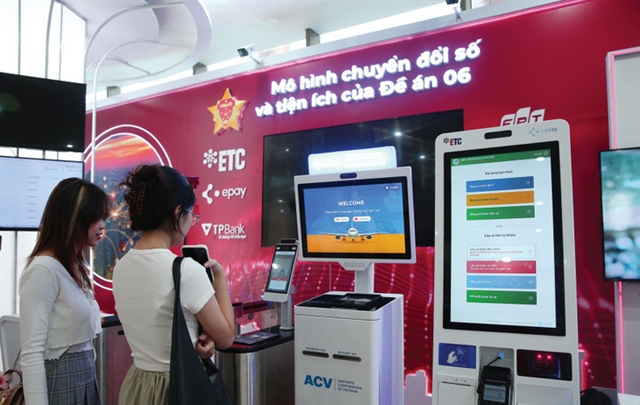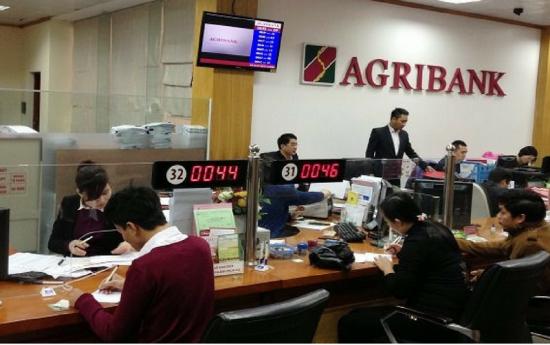 Business Beat
Business Beat


|
| Banks have prioritised agricultural projects that are involved in value chains and adopt high technologies for lending. — Photo Agribank |
Compiled by Thiên Lý
According to the State Bank of Việt Nam’s department of credit for economic sectors, as of April credit injected into rural and agricultural development had reached VNĐ2.3 million billion (US$100 billion), or 24.6 per cent of the banking sector’s total loans.
Banks have prioritised agricultural projects that are involved in value chains and adopt high technologies for lending.
Analysts said loans given to such projects are worth hundreds of thousands of billions, mainly by State-owned lenders.
Agribank leads in this regard, providing credit to 29 hi-tech agricultural parks licensed by the Government and 20 technology-based farm companies.
The state-owned bank has also lent thousands of billions of đồng to companies and farms in value chains to expand production.
Vietcombank is another major lender to the agricultural sector.
For instance, this state-owned bank has lent VNĐ550 billion (US$24 million) to the Dabaco Group, which specialises in identifying and restoring domestic chicken breeds and runs research centres having a modern, closed circle using advanced AI technology, VNĐ575 billion for the Hoà Phát Group’s agricultural project and VNĐ46 billion to the Đà Lạt Flower Forest Biotechnology Corporation.
Another State-owned bank, BIDV, has lent thousands of billions of đồng to agricultural companies’ value chains.
Among the beneficiaries are Hoàng Anh Gia Lai Agricultural Joint Stock Company, which grows orchards (VNĐ721 billion) and the Agricultural Technology Joint Stock Company (VNĐ11.3 billion).
Analysts said banks keen to lend to enterprises in agricultural value chains this is because it has enabled them to reduce risks thanks to effective cash flow management.
Though the risk of bad debts is not completely eliminated, non-performing loans in this area are quite low, they said.
Moreover, Government policies require them to support the development of the agricultural sector, they pointed out.
Dr Cấn Văn Lực, a member of the National Monetary and Financial Advisory Council, said developing hi-tech agriculture is an inevitable trend since it has created a new impetus for the sector amid the context of climate change, industry 4.0 and international integration.
To sustain this, the Government has issued a number of mechanisms and policies to encourage the flow of capital and technologies into rural and agricultural development, and this has already begun to show results, he said.
Analysts suggested however that the Government should soon issue regulations governing implementation of agreements along agricultural value chains with clear sanctions for violations to minimise risks and ensure their stability.
Agriculture firms’ stocks gain on rising food prices
The prices of rice and sugar have risen by 18.6 per cent and 31.8 per cent this year, and according to VNDirect Securities Joint Stock Company, the uptrend is likely to continue.
Market observers blamed this on rising global prices.
According to the Food and Agriculture Organisation of the United Nations, the global food price index in March rose to its highest level since June 2014, and experts said the Covid-19 pandemic is one of the main reasons for this.
The outbreak has forced many countries to stockpile food amid limited supply, which has pushed up prices.
Việt Nam’s rice export enterprises have benefited from the Government’s new anti-dumping tax thanks to which the export rice price was up 1.16 per cent compared to the last quarter of 2020 due to the price increase of fragrant (or jasmine) rice 5 per cent broken.
It has risen to $549 per tonne (FOB FCL) on average, up $19 for the fourth quarter of last year.
A similar situation is also seen in the domestic sugar industry.
According to the International Sugar Organisation, the global market is likely to face a shortage of 3.5 million tonnes during the 2020-21 crop. This will almost certainly push sugar prices up, including in Vietnam.
The Ministry of Industry and Trade’s temporary anti-dumping and anti-subsidy duties on products originating from Thailand have also helped drive sugar prices up.
Market observers said exports of rice and sugar would be higher both in quantity and value this year.
Việt Nam already exports rice to several markets with high product requirements such as the US, Europe and Australia, meaning there has been an improvement in value.
All this has also driven up the stock prices of agricultural and fertiliser companies as agricultural businesses and farmers scramble to increase output to capitalize on the rising food prices.
Analysts said the prices of most fertilisers have soared in 2021, particularly phosphate and urea products, both as a result of strong demand and higher production costs.
Fertiliser companies, especially major ones, have been reporting sharp growth in revenues and profits this year.
In the first quarter, Cà Mau Fertiliser Joint Stock Company saw turnover rise by 39 per cent year-on-year to VNĐ1,931 billion and after-tax profit by 64 per cent to VNĐ152 billion.
Pertrovietnam Fertilizer and Chemicals Corporation reported a 15 per cent rise in turnover to VNĐ1,974 billion.
Revenues rose by 16.5 per cent for the Bình Thuận Agriculture Service Joint Stock Company.
Not surprisingly, their shares have been rising relentlessly.
DPM, DCM, LAS, and BFC are all trading at 52-week highs now. — VNS